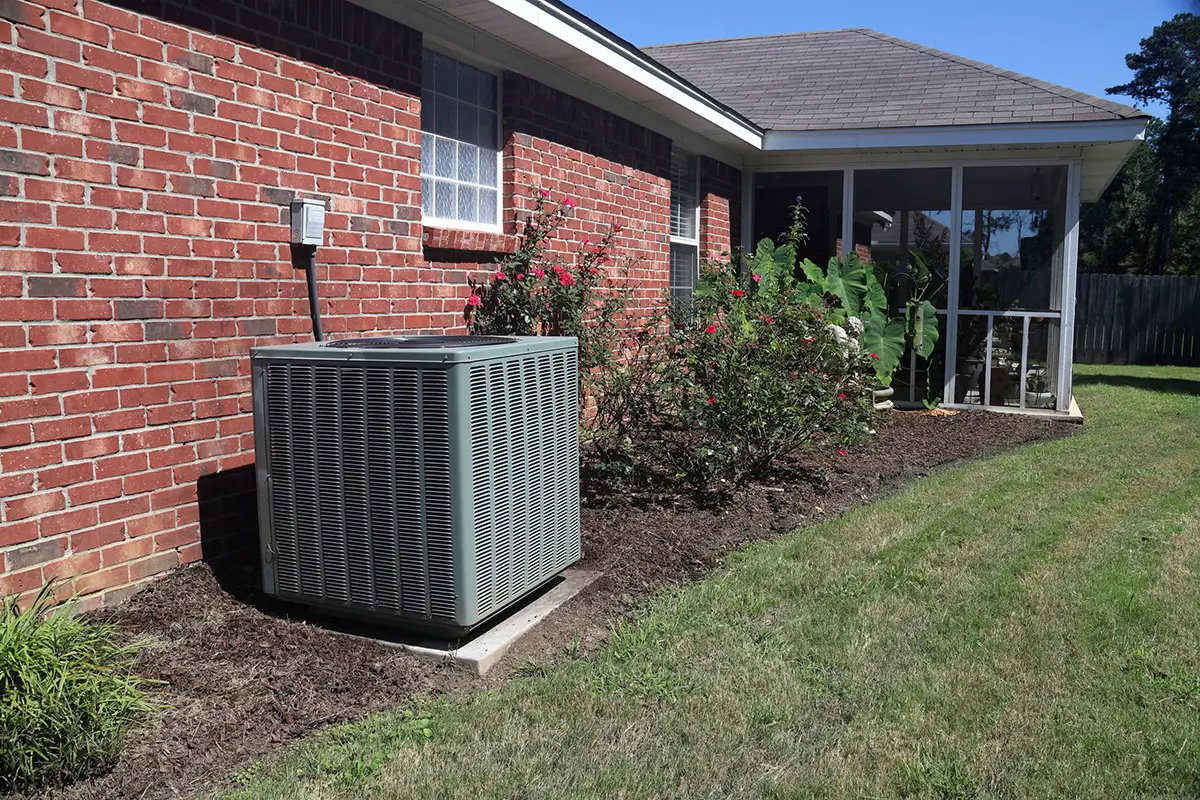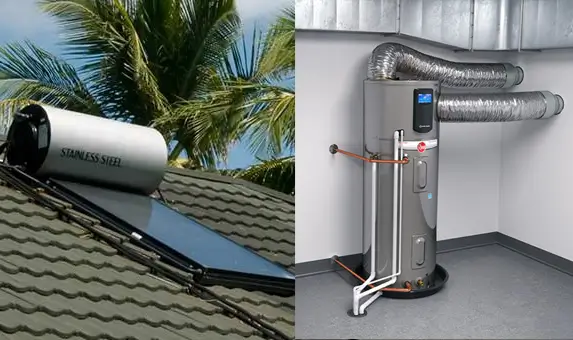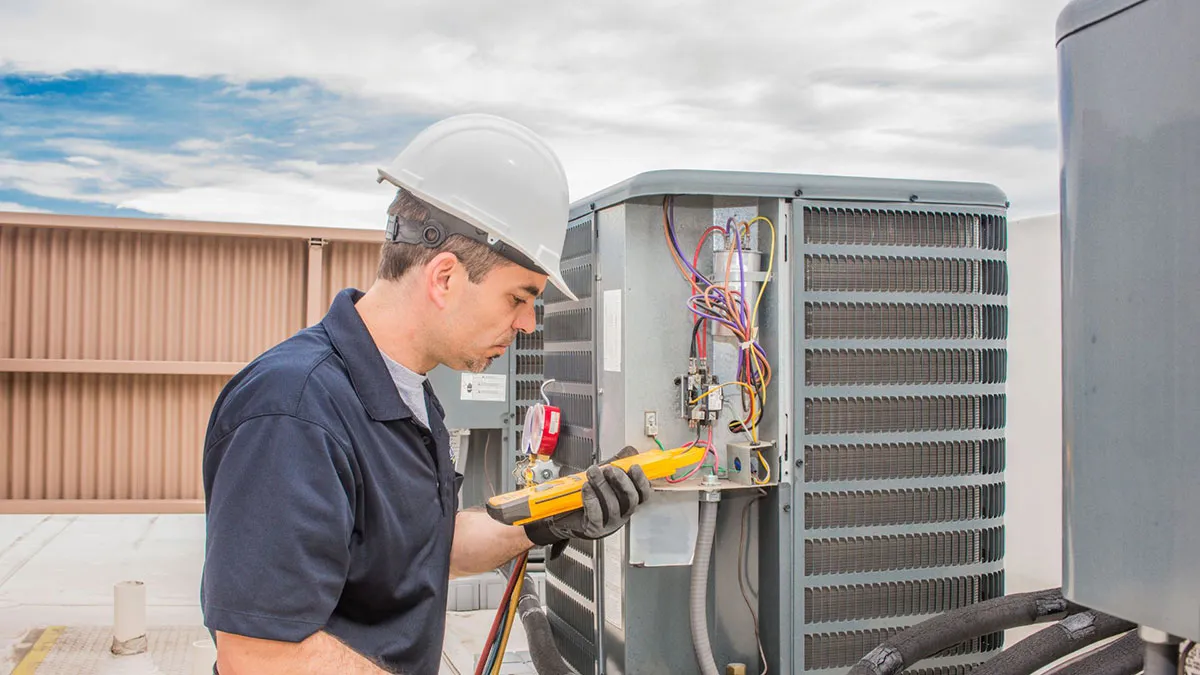There’s nothing more disappointing than going to unload your dishwasher only to find the tub pooled with murky water. A backed-up dishwasher is an unwelcome surprise no homeowner wants to deal with, but try not to panic just yet. More often than not, these backups stem from relatively straightforward issues with simple solutions.
Before you assume you’re facing a massive plumbing disaster, take a deep breath. Dishwasher backups can result from something as basic as a clogged drain line or trapped food particles. Or they may indicate a larger problem like a blocked air gap, improper drain hose installation, or drainage issues deeper in your kitchen plumbing system.
The first step to resolving a waterlogged dishwasher is accurately identifying the underlying cause behind that pool of standing water. In this guide, we’ll thoroughly explore all the potential reasons your dishwasher may start backing up and overflowing its tub.
From there, we’ll cover the proper troubleshooting techniques to diagnose the specific culprit, as well as DIY methods to clear obstructions or make any necessary plumbing repairs. With some practical knowledge, that flooded dishwasher may have an easy solution – no need for premature panic over a huge plumbing overhaul!
Common Causes of Dishwasher Backups
Dishwasher backups may seem like a major plumbing nightmare, but they often have relatively straightforward explanations. Before you panic, let’s explore some of the most common culprits behind a waterlogged dishwasher:
Food Debris and Blockages
One of the most frequent reasons you may find your dishwasher backed up with water? Food particles and debris causing a good old-fashioned clogged drain. Think about all the tiny bits of filth that rinse off your dishes and get flushed down that drain line over time – it’s the perfect recipe for an obstruction.
From larger chunks like bones or fruit pits to just an accumulation of smaller particles congealing together, these food remnants can form a solid blockage in the drain path. This clogs up the discharge line, preventing used dishwasher water from properly draining out and causing it to back up into the tub.
When food debris is the culprit, you’ll often find evidence like visible bits in the standing water. And as the clog worsens, you may notice slow draining during the pump-out cycle or water failing to fully discharge from the tub.
Clogged Filter
Speaking of food remnants, let’s not overlook the dishwasher’s internal filter components as a prime culprit behind drainage issues too! Most dishwashers contain a removable filter positioned in the bottom of the tub designed to catch any stray food particles and debris.
When this filter becomes excessively clogged and gunked up over time, it restricts water flow and starts causing backups into the tub on the drain cycle. And since most people frequently neglect cleaning these filters regularly, it’s an easy maintenance item to overlook until the dishwasher starts overflowing.
Faulty Garbage Disposal
For dishwashers that hook up to the same drain line as a kitchen sink’s garbage disposal unit, a malfunctioning disposer can contribute to backups as well. If the blades or grinding components seize up and stop functioning properly, it creates an obstruction in the shared drain path.
Similarly, leaving the disposal in the “on” position during dishwasher cycles causes issues. As discharge water tries to drain down, it gets blocked by those whirring blades and has nowhere to go except back up into the dishwasher tub.
Drain Hose Issues
Most dishwashers feature a long drain hose that connects the appliance to either an air gap or disposal hookup for drainage. And over time, these hoses can easily become kinked, twisted, detached, or blocked – all of which prevent proper discharge and lead to water backups.
Additionally, drain hoses installed with too high of a loop create improper slopes that trap water and cause backups. While drain hoses seem straightforward, even a minor issue like the hose sitting too low and submerged in standing water can siphon that dirty discharge right back into your dishwasher tub.
Air Gap Blockage
Many dishwasher installations include an “air gap” – a specific housing on the countertop or sink that allows outside air to enter the drain system. This air gap not only prevents the backflow of contaminated discharge but also ensures proper airflow to aid in smooth draining.
However, when these air gaps become clogged with debris, mineral buildup, or obstructions, they lose functionality and disrupt the venting process. Loss of proper venting creates negative pressure that sucks water right back into the dishwasher after draining.
Malfunctioning Drain Pump
Let’s not forget that your dishwasher contains an internal drain pump responsible for pushing all that discharged water out through the drain line during cycles. When this critical pump component malfunctions or fails entirely, it loses the ability to fully evacuate water – causing backups to occur.
Pump issues could stem from obstructions, motor burnout, or electrical failures. But regardless of the cause, a faulty drain pump will leave your dishwasher full of standing water with nowhere for the discharge to go. Repairs or replacements become necessary to restore proper drainage.
So in summary, while dishwasher backups feel like a major headache, they often arise from relatively minor obstructions or small component failures. Accurately pinpointing the clogged or faulty drainage point provides your solution!
DIY Troubleshooting and Solutions
Now that we’ve covered the variety of culprits potentially behind your dishwasher’s backed up woes, it’s time to dive into some practical troubleshooting methods for diagnosing and resolving the issue yourself. With the right DIY approach, you may just avoid an expensive plumbing service call!
Initial Checks
Before breaking out any tools, take a moment to thoroughly inspect the standing water itself. Do you notice any obvious food remnants, utensils, or objects that could have caused a clogged drain? Retrieve and remove those visible items first.
Also, check for any kinked or detached drain hose sections you can easily re-situate by hand. Give the hose a gentle tug to dislodge any obstructions. And peer under the sink to ensure the hose hasn’t become dislodged from the drain pipe or air gap. Simple fixes like reconnecting the hose may resolve some backups.
Cleaning the Dishwasher Filter
If debris seems the likely culprit, your next step should involve removing and cleaning the dishwasher’s internal filter basket. Consult your owner’s manual for the proper filter removal process, as it varies by model.
Once removed, thoroughly rinse and scrub the filter clean of any trapped food particles using an old toothbrush. You can also soak it in a vinegar solution to dissolve stubborn gunk and buildup. Reinstall the freshly purged filter before running the dishwasher again.
Inspecting and Clearing the Drain Hose
Now let’s focus on that all-important drain hose. Start by fully disconnecting the hose at both ends to allow any trapped water to drain out into a bucket. This gives you a chance to inspect the full hose length for any noticeable obstructions or kinks that need resolving.
You can try using a plumber’s auger or stiff wire to dislodge any visible drain hose blockages as well. Just go slowly and carefully to avoid puncturing the hose material.
Reconnect the hose once cleared, ensuring you maintain proper downward sloping angles without any low-point kinks that could trap water. Consider investing in a drain hose extension if yours seems too short to get a good slope.
Checking the Garbage Disposal
If your dishwasher connects to the same drain as a garbage disposal, the disposal itself could certainly be the clogged culprit. First, check that the disposal’s power switch is turned off to avoid any dangerous mishaps.
Remove the rubber drain cover inside to inspect the disposal drain for obstructions like a build-up of food waste or a dropped utensil that needs extracting. You can try rotating the disposal blades back and forth with an Allen wrench to dislodge smaller blockages.
For more stubborn disposer clogs, use a plumber’s snake or hose down the drain. Never stick your hands inside! Finish by confirming the disposal blades can spin freely before reinstalling the drain cover.
Clearing the Air Gap
That small air gap cylinder on the sink top that releases moisture during cycles? Yeah, you’ll want to clean that out too as part of your troubleshooting. These gaps easily accumulate hard water buildup or debris over time that can disrupt the airflow, resulting in drainage backups.
First, unscrew or pop off the air gap cover to access the internal cylinder. Use a small brush and lime de-scaling solution to thoroughly scrub away any mineral deposits or debris obstructions. Avoid using anything too abrasive that could scratch up the cylinder walls. Then rinse away residue and reassemble the air gap when finished.
Testing the Drain Pump
If your dishwasher seems to be powering through cycles normally but still backing up with water, you may have an issue with the internal drain pump itself. Fortunately, testing this component for functionality is fairly straightforward as long as you can locate the pump access panels.
With the dishwasher unplugged, snake your arm back and manually rotate the pump impeller blades to confirm they aren’t seized or obstructed. You should feel them spin smoothly and freely. If so, reconnect the power and initiate a drain cycle to confirm the pump activates appropriately.
Persistent pump failures even without obstructions likely indicate an electrical or mechanical failure within the pump itself – in which case, replacement becomes necessary to restore drainage.
So don’t panic just yet over your dishwasher’s watery woes! With some diligent DIY troubleshooting and repairs, you may avoid having to call in plumbing backup or replace the whole unit altogether.
When to Call a Professional
Despite your best DIY troubleshooting efforts, some dishwasher drainage problems persist and prove too stubborn to resolve through basic unclogging techniques. When you find yourself facing any of the following severe scenarios, it’s time to quit while you’re ahead and call in the professional plumbing reinforcements:
Recognizing Severe Issues
If you’ve exhausted all the DIY dishwasher unclogging methods we covered and steady standing water remains no matter what, you likely have a major blockage or plumbing malfunction on your hands that requires more in-depth diagnosis and repair skills.
Gurgling drain noises, water backing up through the air gap onto countertops, or evidence of leaks around the dishwasher housing all suggest obstructions or damage deeper within drain line plumbing that you can’t readily access for repairs.
Similarly, electrical or mechanical failures preventing the drain pump from activating at all necessitate professional diagnosis and potential pump or motor replacements. Dishwasher control panels that remain unresponsive even after resets indicate serious electrical issues too.
If you notice any suspicious funk or sewage odors accompanying that standing dishwasher water, clear signs point to a significant drain line backup that could pose potential health hazards and require specialized plumbing equipment to safely resolve.
Potential Costs and Benefits
Of course, hiring professional plumbers to make dishwasher repairs adds extra service costs on top of any replacement parts needed. But those costs could prove worthwhile compared to the risks of causing bigger problems through improper DIY fixes.
Plumbers not only have the specialized tools like drain augurs, hydro-jetters, and inspection cameras to comprehensively clear drain obstructions, but they also understand modern plumbing system designs to properly repair or replace faulty components. Their expertise prevents unintended damage during drain work.
Plus, reliable plumbing services offer warranties on parts and labor – added insurance that any dishwasher repairs should provide lasting drainage solutions rather than just temporarily fixing symptoms. Why keep subjecting yourself to recurring backups and clogs?
Choosing a Reliable Repair Service
When it does come time to put down the drain snake and pick up the phone, do your research to select an experienced, reputable plumbing repair service for dishwasher issues.
Check prospective plumbers’ credentials to ensure proper licensing and insurance coverage. You’ll also want services with specific experience working on major dishwasher brands and models to ensure proper diagnoses and part replacements.
Get pricing estimates upfront in writing to avoid surprise repair costs, and inquire about satisfaction guarantees on workmanship. Choosing an established plumbing outfit with positive customer reviews provides peace of mind that your dishwasher repair gets done right the first time.
With a reliable, skilled plumbing pro handling your drainage headaches, you can avoid risky DIY measures while simultaneously preventing relatively minor dishwasher issues from spiraling into requiring whole appliance replacements down the road. Sometimes strategically calling in the experts proves the most affordable solution!
Let Steve’s Plumbing Drain Away Dishwasher Disasters
Nobody wants to deal with the hassle and potential damage of a dishwasher that just won’t drain properly. While DIY fixes sometimes resolve basic clogs, there’s no shame in waving the white flag when drainage issues persist despite your best efforts. That’s the smart time to call in professional plumbing help before you inadvertently cause even bigger headaches.
For Hawaii homeowners tired of battling standing dishwasher water, companies like Steve’s Plumbing provide the trusted drainage experts you need. With decades of island experience, our team has the specialized tools and techniques to diagnose and resolve dishwasher drainage nightmares quickly.
From hydro-jetters to clear the nastiest drain clogs to cameras to inspect plumbing issues, Steve’s Plumbing & A/C Service in Honolulu leaves no stone unturned in getting your dishwasher draining smoothly again. We’ll make any necessary repairs too using warrantied, guaranteed parts so those drainage woes stay flushed for good.
Don’t risk potential water damage, mold growth, or health hazards by procrastinating on that flooded dishwasher. Spare yourself the stress and mess – dial up the drainage professionals at Steve’s for a service call. Our unbeatable plumbing expertise means you can count on a comprehensive, lasting resolution every time.
Stop losing your mind over dishwasher pools and call Steve’s at (808) 563-4054 today. With our top-notch service and island know-how, we’ll have your dishwasher draining like a dream again before you know it!









